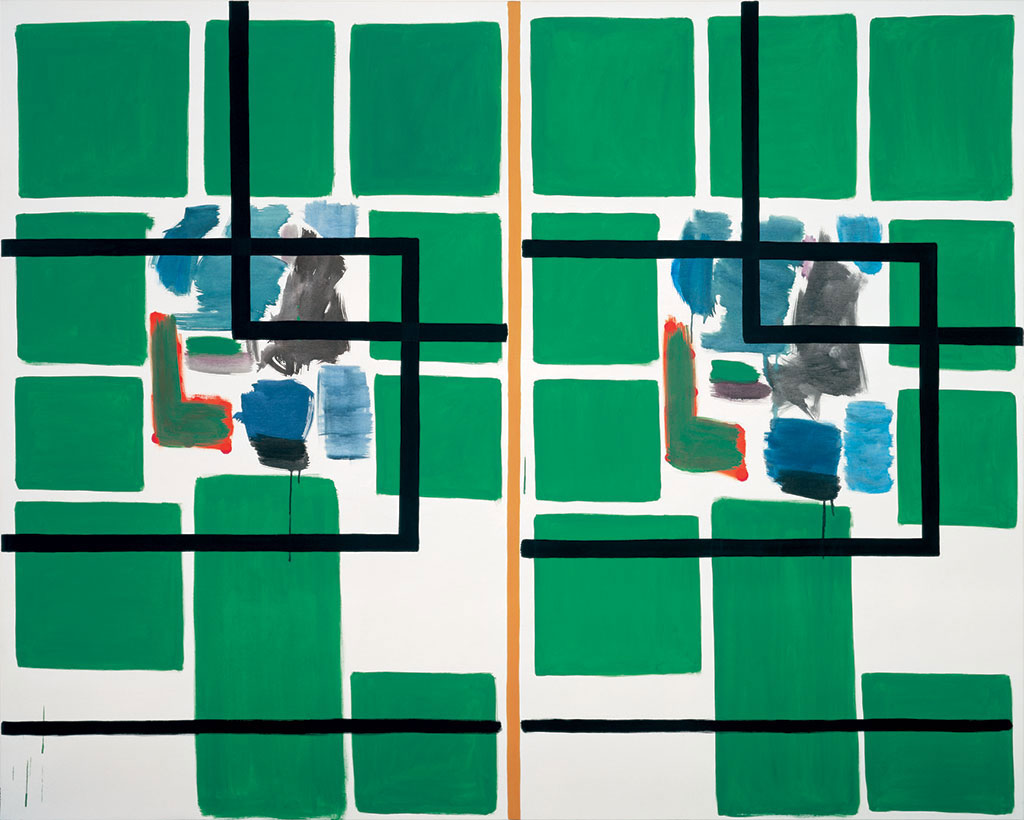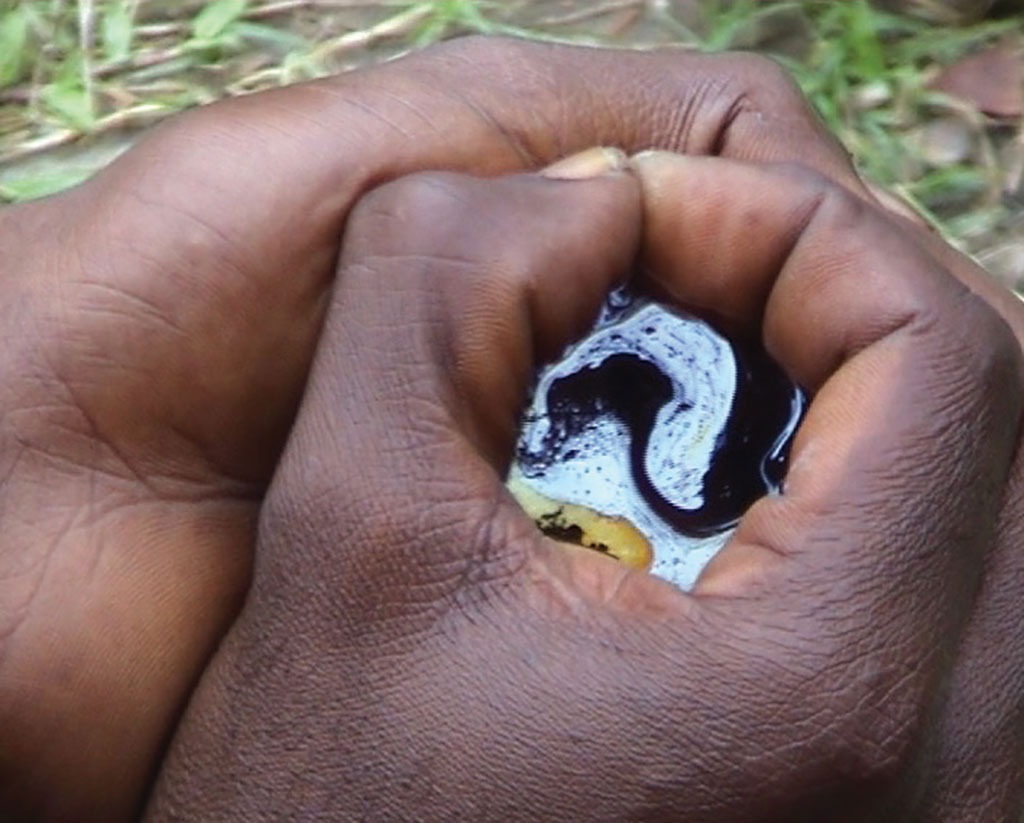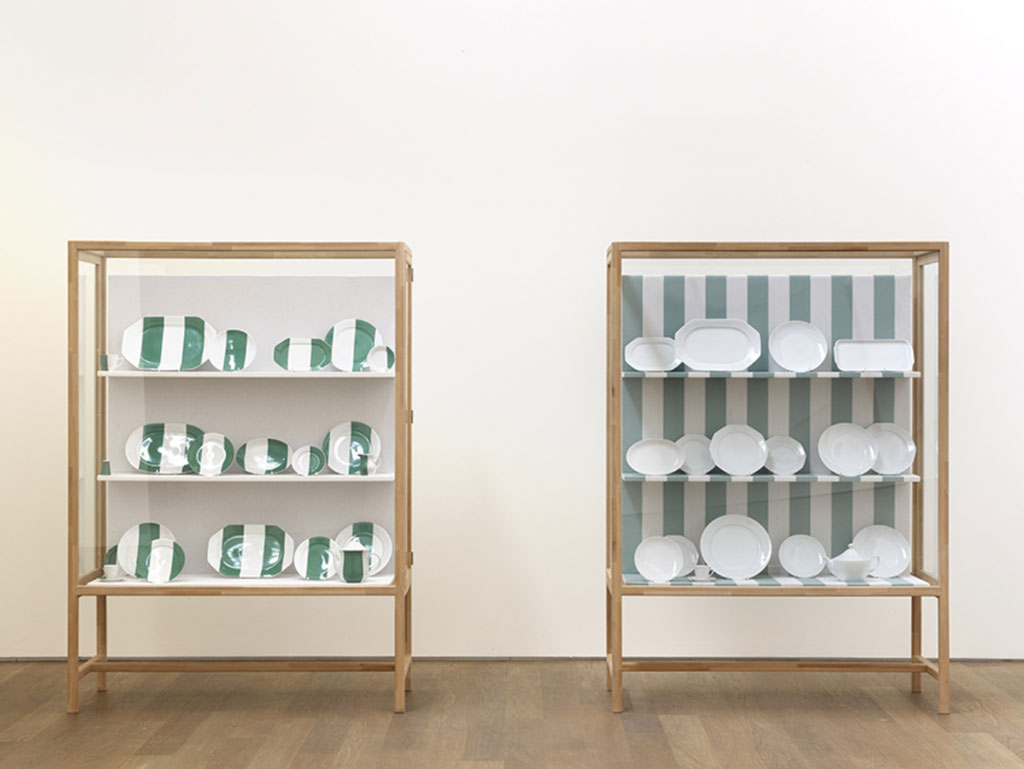ART-PRESENTATION: Hier, Aujourd’hui, Demain
 In the exhibition “Hier, Aujourd’hui, Demain – Works from the Mudam Collection“ are on presentation works from Mudam Luxembourg – Musée d’Art Moderne Grand-Duc Jean Collection across three floors of the museum. The display features large scale video installations alongside a selection of painting and sculpture that highlights the museum’s singular architectural context. Conceived in a moment of dramatic change and widespread uncertainty, the presentation takes its title from a work in the collection “Yesterday, Today, Tomorrow” by Peter. Halley’s painting from 1987 was acquired for the collection in 1998, eight years prior to the opening of the museum.
In the exhibition “Hier, Aujourd’hui, Demain – Works from the Mudam Collection“ are on presentation works from Mudam Luxembourg – Musée d’Art Moderne Grand-Duc Jean Collection across three floors of the museum. The display features large scale video installations alongside a selection of painting and sculpture that highlights the museum’s singular architectural context. Conceived in a moment of dramatic change and widespread uncertainty, the presentation takes its title from a work in the collection “Yesterday, Today, Tomorrow” by Peter. Halley’s painting from 1987 was acquired for the collection in 1998, eight years prior to the opening of the museum.
By Efi Michalarou
Photo: Mudam Luxembourg Archive
Shifting back and forth between past and present, “Hier, Aujourd’hui, Demain“ demonstrates how artworks and collections can anchor historical narratives whilst remaining open to and renewed by continued reinterpretation and re-evaluation according to the times in which they are shown. The painting “Yesterday, Today, Tomorrow” by Peter Halley, which immediately makes an impression because of its physical presence, oscillates bet-ween a material object and an aesthetic object. Peter Halley suggests the succession of sequences by linking several panels with a black and red stripe which, as the title indicates, embodies the passing of time. The work is related to the so-called Neo-Geo movement in which artists well versed in the formal vocabulary of the minimalists and American abstract painting produce large format works composed of signs on colored backgrounds. Although he is associated with this pictorial tendency which emerged in the 1980s, Peter Halley is, however, sceptical about this label which has been applied mainly by art critics. On the ground floor of the museum a series of sculptural works by Bert, Heffingen, David Zink Yi and Bruno Peinado are presented in the respective spaces of the Grand Hall, Jardin des Sculptures and Pavilion. The mobile furniture sculptures “Drifters” (2005-06) by Bert Theis were commissioned for the opening of the museum in 2006 and are exhibited in an unprecedented large-scale configuration. They are presented alongside “Flugplatz Welt/ World Airport” (1999), by Thomas Hirschhorn. Exhibited in the West Gallery, this extensive installation was created for the 48th Venice Biennale and acquired by Mudam the following year. The work deals with the question – so determinant today – of globalization and its collateral, often paradoxical effects: “Macro-isolation, selfisolation, and particularities – ethnic, religious, social, linguistic, cultural… – local divisions, regional and private wars, war lords all tend to separate one entity from another. This shrinkage and splitting is what I wished to explore in “Flugplatz Welt / World Airport”, the artist explains. However, certain elements provide guidelines (of reflection): the altars represent specific dimensions (spirit – body – soul), the assorted books invite reading, while the silver spoons are meant to be an ironic reflection of the expression according to which some are born with them in their mouths, tracing a demarcation line in this globalized and interconnected world which decides between winners and losers. “Flugplatz Welt / World Airport” is not however an overtly political artwork in the sense that it doesn’t take a position and, because of its plethoric nature, denies any explicit and singular reading. The galleries on the lower ground floor present two major video installations from the collection. Video Quartet by Christian Marclay was co-produced by Mudam in 2002. It is presented alongside “Island” (2008) by Fiona Tan which was acquired for the collection on the occasion of Tan’s solo exhibition at Mudam in 2016. The galleries on the first floor are devoted to a display of abstract painting, sculpture and moving image work. Large-scale paintings by Imi Knoebel, Günther Förg, Albert Oehlen and Julian Schnabel, and a sculpture by Richard Deacon were also amongst the first works acquired for Mudam’s Collection. They are presented alongside subsequent acquisitions and donations from the last two decades. These include an expansive sculpture by Cabrita, who mainly uses recycled materials which are put together to create new ensembles in which emotions, memory and silence always play a role. His installation “À propos des lieux d’origine #1” (2005), is a poetic interaction of “poor”, recycled building materials (steel, brick), illuminated neon tubes and the connecting cables. Their arrangement, which is adapted to suit the exhibition room, underlines a number of contrasts: the functionality of the room is offset by the poetic nature of the installation, the artificially constructed architecture of the deconstructed and then reconstructed assembly. The exhibition room thus becomes a space for thoughts in which the installation can be perceived as part of a greater whole which it only touches incidentally. Also, are included, a video by Edith Dekyndt and paintings by Michel Majerus, Fiona Rae and Thomas Scheibitz. Sculpture by Adriano Amaral, paintings by Ana Manso and Bernard Piffaretti and a work by Liam Gillick are exhibited in the museum for the first time.
Artists: Adriano Amaral, Daniel Buren, Cabrita, Richard Deacon, Edith Dekyndt, Günther Förg, Liam Gillick, Peter Halley, Thomas Hirschhorn, Imi Knoebel, Michel Majerus, Ana Manso, Christian Marclay, Albert Oehlen, Bruno Peinado, Bernard Piffaretti, Fiona Rae, Thomas Scheibitz, Julian Schnabel, Fiona Tan, Bert Theis, Su-Mei Tse, Didier Vermeiren and David Zink Yi
Info: Curators: Michelle Cotton & Marie-Noëlle Farcy, Mudam Luxembourg – Musée d’Art Moderne Grand-Duc Jean 3 Park Dräi Eechelen, Luxembourg-Kirchberg, Duration: 27/6-6/9/20, Days & Hours: Mon & Thu-Sun 10:00-18:00, Wed 10:00-21:00, www.mudam.com






